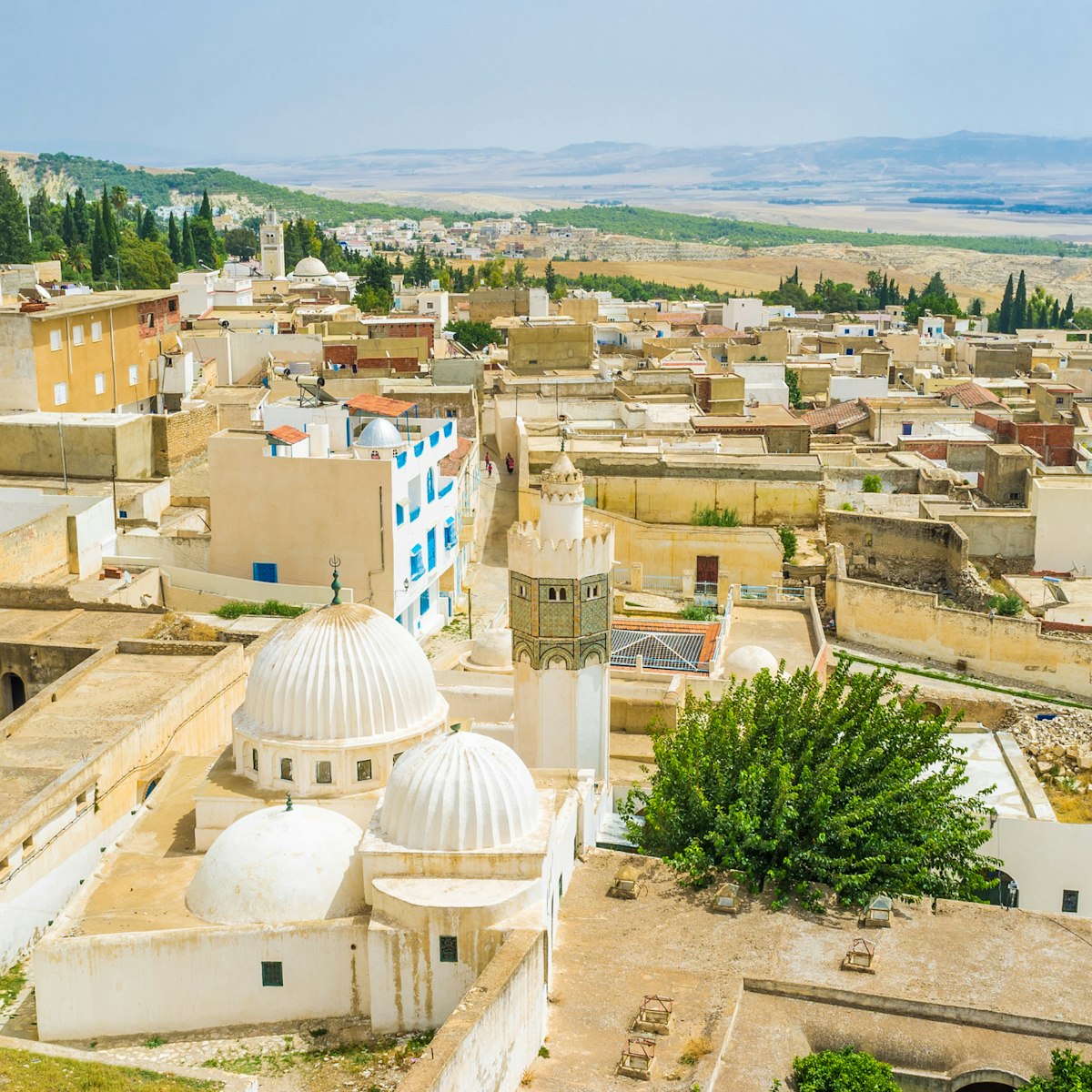The largest marble quarry in ancient North Africa, Chemtou was the source of an unusual, pink-veined yellow marble that was prized throughout the Roman world for its resemblance to gold. It’s daunting even to contemplate the work that went into carving out and transporting the huge blocks of stone. The site is fascinating and hosts a unexpectedly excellent museum documenting Chemtou’s history.
Check travel advice before visiting Chemtou; the British Foreign Office currently advises against non-essential travel to the area.
Chemtou, including the museum, quarries and a number of well-preserved Roman ruins, sprawls over a wide area between Oued (River) Medjerda and the band of low hills that provided the source of the marble. Bring sturdy shoes and plenty of water. A guide can improve your interpretation of the site – Amel Ayadi, based in Bulla Regia – gives excellent tours in English and French.
The first-rate archaeological museum is the star attraction here. Labelling is in Arabic, French and German, but there are leaflets in English as well. Highlights include exhibits on the technology used to quarry and transport marble; a beautiful sample of the different shades of Chemtou’s marble, from pale yellowy-green to garish red; a fine mosaic floor representing the four seasons; a re-creation of the Monument of Micipsa, which once crowned a nearby hilltop; and an impressive marble plaque designed to glorify the emperor.
To the left as you exit the museum is a small section of original Roman road used to transport marble down to the river. Excavations of the forum, a few hundred metres to the west, have revealed that it was built on the foundations of a Numidian temple.
The quarries, three in all, are in the little hills north of the museum. It’s still very clear where the Romans were excavating. A path leads up to the top of the easternmost hill, where you can see the ruins of a Numidian temple, later converted into a temple to Saturn by the Romans and then a Byzantine church. From the top, the remains of the old military garrison and the labour camp (all the quarrying was done by slaves and prisoners) to the northeast are clearly visible.
About 1km south there’s a Roman bridge over Oued Medjerda, just downstream from the modern bridge. Situated further along from the bridge are the ruins of a turbine mill.
Despite the town’s proximity to the river, drinking water was brought in by aqueduct from a spring in the hills 30km to the north. If you arrive from the north, the first ruins you see are the remains of this aqueduct advancing across the landscape. It ends at the ruins of the municipal baths, to the right of the access road, which continues past a Roman theatre.
Chemtou is 16km west of the Bulla Regia turn-off on the Jendouba–Ain Draham road (4km northwest of Jendouba). You can also take the Jendouba–Ghardimaou road to Oued Melliz and take the turn heading north. The museum is signposted.
A taxi from Jendouba costs about 20/30DT one way/return and 30DT to 40DT return to include a couple of hours at the site. By public transport, you might take a louage (shared taxi) from Jendouba to Ghardimaou via Ouergech and ask to be dropped off at the turning, from where it's just under a kilometre to the site entrance.
Check travel advice before visiting: the British government currently advises against all but essential travel to this area because of its proximity to the border with Algeria.




